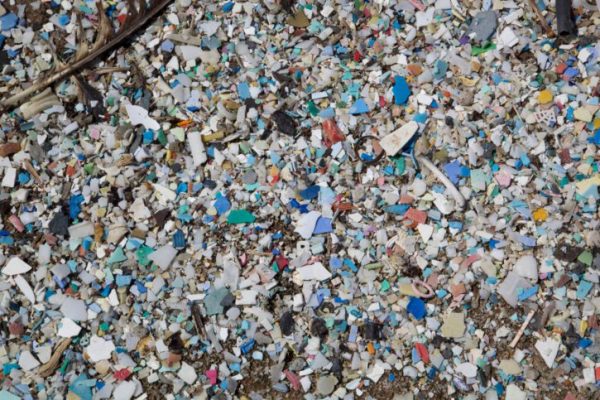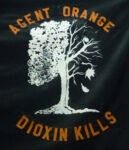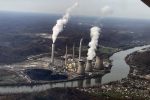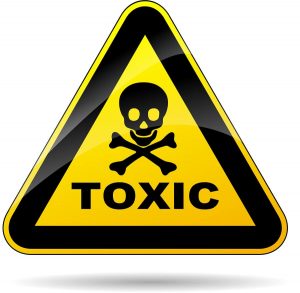
Years ago, one of the weekly chores of many families was to burn trash in a metal drum or barrel. We had one of those barrels near the back of our yard and I remember my dad burning our trash. It was quite remarkable that in a few hours, all that remained of a week’s worth of garbage was a pile of ash. However, burning our waste is really not a safe or sustainable way to address the issue. But, people living in some areas today still do not have garbage pick-up and continue to burn wastes.
According to a recent report in the Intercept, “Africa’s Exploding Plastic Nightmare,” African cities still burn 75 percent of their wastes, and, globally, 41 percent of wastes are still burned. One city in Ghana is the final destination for much of the world’s electronic or E-waste. These are things like old computers and TVs. While some of it is repurposed, the rest, especially cables and wires, are burned to strip the coating from the copper. The resulting fumes engulf the surrounding neighborhoods where humans and other species are exposed to the toxins. Chicken eggs from those areas have some of the highest amounts of brominated dioxin ever measured!
When I was teaching at a local school, a fellow teacher and her family became deathly ill as a result of burning wastes. They had burned pieces of vinyl siding in a campfire. When you burn vinyl siding, which has chlorine in its make-up, you release toxic fumes. These include hydrogen chloride, carbon monoxide, carbon dioxide, and traces of phosgene gas, a gas six times more deadly that chlorine gas.
Another construction material that should not be burned is treated wood, especially the older type which contained chromated copper arsenic with the CCA label. When it is burned it releases arsenic in the smoke and arsenic remains in the ash wastes. While today’s treated wood no longer contains arsenic, it still contains copper compounds and also should not be burned.
Like treated wood, there are certain things that, when burned, release toxic substances or create compounds more toxic than the originals that were burned or incinerated. What many people fail to realize is that burning or incineration does not result in 100 percent destruction of anything. Even the most efficient industrial incinerators cannot guarantee complete destruction.
An example is the hazardous waste incinerator in East Liverpool, Ohio which is currently attempting to incinerate PFAS wastes, the chemicals used to make Teflon. The incinerator’s original permit allowed the facility to release over 4 tons of lead emissions a year into a heavily populated river valley prone to air inversions.
You might wonder how so much lead gets into wastes, but before 1978 lead was in most paints. It is also in waste oils and other wastes such as plastic. Many hazardous wastes contain heavy metals like lead.
In addition to incinerators, hazardous wastes are often burned in cement kilns and used as a fuel source. This means the materials that go into the kilns are carbon rich. Waste-to-energy furnaces burn domestic wastes usually from large cities to create energy.
These facilities can reach temperatures of upwards of 3000 degrees Fahrenheit, but usually are operated around a minimum of 1400 degrees Fahrenheit. Since no industrial process can achieve 100 percent destruction, products of incomplete combustion or PICs are created and go up the stack along with other gases like carbon dioxide. It is very difficult to test air emissions from these processes to determine just what and how many PICs are being released.
Some of the most toxic compounds known to man are PICs. These include: polychlorinated biphenyls (PCBs), dioxins (Agent Orange), and naphthalene (mothballs). How are these dangerous compounds created? Think of it like baking a cake, you have all the ingredients like chlorinated hydrocarbons in the kiln (oven), you add some heat, some oxygen, and voila, a deadly cake exits the smokestack.
PICs can also be formed during recombination. High heat breaks the original wastes compounds apart in the kiln, as these pieces of broken compounds exit the long smokestack, they cool and hook back up to create new compounds, PICs. Anytime a chorine-carbon mixture is burned, there is a chance that toxic dioxins and furans will form in the stack or be found in the ash.
Burning coal in power plants creates toxic ash. In the USA, 110 million tons of coal ash is generated every year. This ash can contain metals like arsenic, chromium, lead, nickel, zinc, thallium, selenium and mercury. Long-term exposure to coal ash can cause kidney, heart, and liver damage and a variety of cancers according to the National Resource Defense Council. Sadly, the EPA does not classify coal ash as a “hazardous waste.”
The ridiculous amount of plastic wastes littering the land is prompting the plastic industry to push incineration as one solution. This was studied as long ago as 1973. Since plastic is made primarily from hydrocarbons it will burn readily. This seems like a simple solution but once again, plastic isn’t something that can be completely destroyed without creating PICs.
The plastic waste crisis prompted China, Malaysia, and Vietnam to prohibit the import of international wastes in 2018. The USA and many European nations are now shipping their plastic wastes to some Southeast Asian countries claiming it will be recycled. But these countries do not have the infrastructure or money to even start recycling programs. Some are refusing the wastes while others may be using incineration to get rid of the mountains of plastics.
As a result of the global waste issue, an amendment was added to the Basil Convention. The original Basil Convention Treaty was put in place to help stop the flow of “waste trading” internationally, especially chemical wastes. This new amendment was signed by 187 countries and was put in place to stop plastic waste dumping. Until this treaty, “all plastic could be traded freely.” Soon, as of January 2021, “only non-halogenated polymers or a mix of clean, sorted and uncontaminated PET destined for recycling can be freely traded.”
The United States, the third largest exporter of plastic waste and the second largest producer of plastic in the world, refused to sign the treaty.
Recently, Ohio’s Governor DeWine refused to veto HB 242, the bill that would prohibit single-use plastic bans, even though many communities in Ohio had already passed their own single-use plastic bans.
Part of the solution to plastic pollution? Society stops using single-use plastic. Get involved in OVEC’s efforts around petrochemicals/plastics. Give us a call at 304-522-0246, or send an e-mail to info@ohvec.org to find out more.











